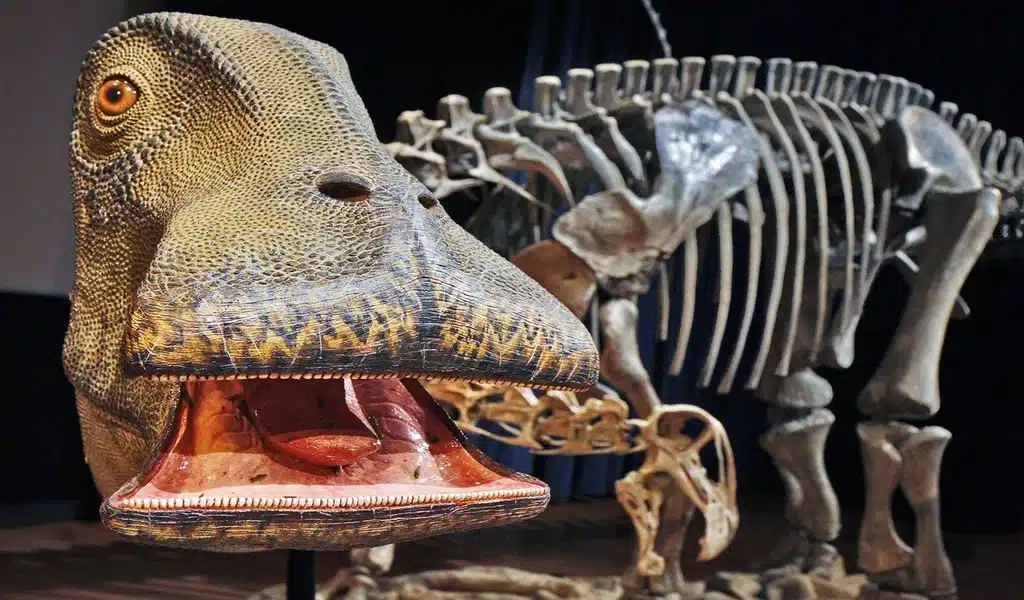Learning
POLG Mutations and Its Impact on Children’s’ Health

POLG mutation is responsible for replicating the mitochondrial genome, playing a crucial role in the functioning of the central nervous system. Mutations in the POLG gene can lead to a spectrum of disorders, affecting individuals from infancy to late adulthood. These disorders are characterized by overlapping phenotypes, impacting the neurological system.
The mitochondrial DNA polymerase encoded by the POLG gene is essential for the replication of the mitochondrial genome, which is vital for ATP production in neurons. The mitochondrial DNA is replicated by a complex of proteins, including DNA polymerase γ (pol γ) and the Twinkle mtDNA helicase, among others. Understanding the role of the POLG gene and its implications for neurological health is essential in addressing POLG-related disorders.
Understanding POLG and its Functions
Mitochondria are the powerhouse of the cell, responsible for producing the energy necessary for cellular function. The mitochondrial DNA (mtDNA) within these organelles encodes essential genes involved in energy production. The polymerase gamma (POLG) enzyme plays a critical role in maintaining the integrity of mtDNA through replication.
The Role of POLG in Mitochondrial DNA Replication
POLG is the enzyme primarily responsible for replicating and repairing mtDNA. It is crucial for ensuring the accurate transmission of genetic information during cell division. Working in conjunction with other proteins, POLG facilitates the precise replication of the mitochondrial genome, allowing for the maintenance of healthy mitochondrial function.
How POLG Mutations Affect the Body
Mutations in the POLG gene can have severe consequences for mitochondrial function. Inherited POLG mutations are associated with a spectrum of disorders, including Alpers-Huttenlocher syndrome and progressive external ophthalmoplegia. These mutations can compromise mtDNA replication, leading to mitochondrial dysfunction and energy production deficits in various tissues throughout the body.
For more information on the role of POLG and its implications for mitochondrial health, refer to the National Institute of Neurological Disorders and Stroke.
Types of POLG Mutations
The POLG gene, responsible for mitochondrial DNA replication, can undergo various mutations, leading to a range of disorders. Common POLG gene mutations include those causing early childhood mitochondrial DNA depletion syndromes or later-onset syndromes from mtDNA deletions.
These mutations are prevalent, with up to 2% of the population carrying them. They result in a spectrum of disorders, such as Alpers–Huttenlocher syndrome, childhood myocerebrohepatopathy spectrum, myoclonic epilepsy myopathy sensory ataxia, ataxia neuropathy spectrum, autosomal recessive progressive external ophthalmoplegia, and autosomal dominant progressive external ophthalmoplegia.
Common POLG Gene Mutations
The POLG gene mutations primarily give rise to early childhood mitochondrial DNA depletion syndromes or later-onset syndromes stemming from mtDNA deletions. These mutations are widespread, affecting approximately 2% of the population. They lead to various neurological and mitochondrial disorders across different age groups.
The Impact of Different Mutation Types
Different types of POLG mutations result in a continuum of overlapping phenotypes with onset from infancy to late adulthood. The varying mutation types play a critical role in the severity and onset of associated disorders. Understanding the impact of these mutation types is crucial for diagnosing and managing POLG-related conditions effectively.
For further information on specific POLG mutations and their impact, refer to Journal List and HHS Author Manuscripts.
POLG-Related Disorders
The POLG gene is associated with a spectrum of disorders that affect various body systems. Understanding these conditions is crucial for accurate diagnosis and management. Below are some notable POLG-related disorders:
Alpers–Huttenlocher Syndrome
Alpers–Huttenlocher Syndrome is a severe condition characterized by recurrent seizures, liver disease, and progressive neurological degeneration. It primarily affects infants and young children, leading to developmental regression and liver failure.
Childhood Myocerebrohepatopathy Spectrum
Childhood myocerebrohepatopathy spectrum encompasses a range of neurological and hepatic manifestations. Children with this spectrum may experience muscle weakness, developmental delays, seizures, and liver dysfunction. Symptoms vary widely, making diagnosis challenging.
Myoclonic Epilepsy Myopathy Sensory Ataxia (MEMSA)
MEMSA is a rare neurological disorder that typically presents in adulthood. It is characterized by myoclonus (sudden, brief muscle jerks), epilepsy, muscle weakness, and sensory ataxia. Patients may also develop cognitive impairment over time.
Ataxia Neuropathy Spectrum
The ataxia neuropathy spectrum involves a combination of ataxia (impaired coordination), peripheral neuropathy, and ophthalmoplegia (paralysis or weakness of the eye muscles). Symptoms often progress slowly and may include gait disturbances, sensory loss, and vision problems.
Progressive External Ophthalmoplegia
Progressive external ophthalmoplegia primarily affects the muscles responsible for eye movement. Individuals with this disorder experience weakness or paralysis of the eye muscles, leading to drooping eyelids and difficulty moving the eyes.
For further information on POLG-related disorders, visit Genetics Home Reference and National Organization for Rare Disorders.
Diagnosis and Detection
Genetic testing for POLG mutations is a crucial aspect of diagnosing and detecting this condition. By analyzing an individual’s DNA, healthcare professionals can identify any mutations in the POLG gene that may be contributing to the patient’s symptoms.
Genetic Testing for POLG Mutations
Genetic testing involves obtaining a blood sample from the individual, and then isolating and analyzing their DNA for any mutations in the POLG gene. This type of testing can provide valuable insights into the genetic factors underlying the patient’s symptoms, guiding healthcare providers in making an accurate diagnosis and determining the most appropriate treatment plan.
Identifying Symptoms and Patterns in Inheritance
In addition to genetic testing, healthcare providers also focus on identifying specific symptoms and patterns of inheritance associated with POLG mutations. By recognizing the unique constellation of symptoms commonly seen in individuals with POLG-related disorders, healthcare professionals can further support their diagnosis and provide tailored care for the patient.
In many cases, individuals with POLG mutations exhibit a combination of symptoms such as epilepsy, muscle weakness, and liver problems. Furthermore, understanding the inheritance patterns of POLG mutations can be essential for identifying at-risk family members and providing them with appropriate genetic counseling and testing.
For more information on genetic testing and inheritance patterns, refer to reputable sources such as the National Institutes of Health and the American College of Medical Genetics and Genomics.
Pathophysiology of POLG Mutations
The POLG gene is responsible for encoding the mitochondrial DNA polymerase, crucial for the replication of the mitochondrial genome. Mutations within POLG are associated with causing mitochondrial dysfunction, leading to various disease manifestations. The relationship between POLG mutations and mitochondrial health is pivotal to understanding the pathophysiology of POLG mutations.
Mitochondrial Dysfunction and Disease Manifestation
Mitochondrial dysfunction resulting from POLG mutations plays a significant role in the development of a spectrum of disorders, ranging from early childhood mitochondrial DNA (mtDNA) depletion syndromes to later-onset syndromes caused by mtDNA deletions. These mutations are recognized as the most common cause of inherited mitochondrial disorders, affecting a notable percentage of the population. The impact of POLG mutations gives rise to a continuum of overlapping phenotypes, with onset ranging from infancy to late adulthood.
The Relationship Between POLG Mutations and Mitochondrial Health
The intricate connection between POLG mutations and mitochondrial health directly influences the clinical features of associated disorders. Understanding this relationship is pivotal in comprehending the pathophysiology, natural progression, and treatment of POLG-related disorders, with a particular focus on their neurological manifestations.
For further insight into the topic, refer to the Journal List and HHS Author Manuscripts.
Treatment and Management Options
In dealing with POLG mutation, it is crucial to explore various treatment and management options to address the complex nature of this condition. These approaches aim to alleviate symptoms and enhance the quality of life for individuals impacted by this genetic disorder.
Current Therapeutic Approaches
Current therapeutic approaches for POLG mutation focus on addressing specific symptoms and complications associated with the condition. This may involve a multidisciplinary approach, including medical interventions, physical therapy, and specialized care. Medications targeting symptom management, such as anticonvulsants for seizures and coenzyme Q10 for mitochondrial dysfunction, are commonly prescribed. Additionally, patients may benefit from genetic counseling to gain a better understanding of their condition and navigate available treatment options.
Managing Symptoms
Effective management of symptoms is essential for individuals with POLG mutation. Symptoms can vary widely, ranging from muscle weakness and fatigue to neurological manifestations. Implementing personalized management plans tailored to the individual’s symptom profile is crucial. This may encompass a combination of medication management, physical and occupational therapy, and lifestyle modifications to address specific challenges faced by patients.
Improving Quality of Life
Improving the quality of life for individuals with POLG mutation involves comprehensive support systems and interventions. Access to supportive services, such as psychological counseling, nutritional support, and social resources, can significantly enhance the overall well-being of patients and their families. Implementing strategies to promote independence and adaptation to the limitations imposed by the condition is integral to improving the quality of life for individuals affected by POLG mutation.
For more information about POLG mutation and its impact on individuals, you can refer to the National Institute of Neurological Disorders and Stroke’s comprehensive guide on genetic disorders.
Research and Future Prospects
As research into POLG mutations continues to advance, there is growing insight into the genetic and molecular mechanisms underlying this condition. Recent studies have made significant strides in understanding POLG mutations, shedding light on the complexities of this genetic disorder. These advancements are paving the way for potential avenues of future treatments and management strategies.
Advances in Understanding POLG Mutations
Research efforts have delved into unraveling the intricate genetic variations associated with POLG mutations. Studies have identified specific genetic markers and pathways linked to the manifestation and progression of POLG-related disorders. Furthermore, the exploration of mitochondrial dysfunction and its role in POLG mutations has provided valuable insights into the pathological processes underlying this condition.
Moreover, emerging research has elucidated the phenotypic spectrum of POLG mutations, encompassing a wide range of clinical manifestations and disease presentations. This comprehensive understanding of the diverse phenotypes associated with POLG mutations is instrumental in guiding accurate diagnosis and tailored therapeutic approaches.
Potential Avenues for Future Treatments
The expanding knowledge base surrounding POLG mutations holds promise for the development of targeted therapeutic interventions. With a deeper grasp of the molecular mechanisms implicated in POLG-related disorders, researchers are exploring novel treatment modalities aimed at addressing the core pathophysiological processes.
Furthermore, the identification of potential therapeutic targets and pathways offers opportunities for the development of pharmacological interventions and gene-based therapies. These innovative avenues hold the potential to mitigate the impact of POLG mutations and improve clinical outcomes for affected individuals.
In addition, the prospect of personalized medicine tailored to the specific genetic profiles of individuals with POLG mutations is on the horizon. Harnessing the principles of precision medicine, future treatments may encompass customized approaches that address the unique genetic underpinnings of POLG-related conditions.
With ongoing advancements in research and the emergence of novel therapeutic prospects, the outlook for individuals affected by POLG mutations is poised for continued progress and innovation. This trajectory holds promise for enhanced disease management and improved quality of life for patients living with POLG-related disorders.
Conclusion
In conclusion, understanding the implications of POLG mutations on mitochondrial DNA replication and the subsequent impact on neurological function is crucial. The range of overlapping phenotypes associated with POLG mutations underscores the complexity of these disorders. Further research into the clinical features, pathophysiology, and treatment of POLG-related disorders will continue to be vital in advancing our understanding of these conditions and improving patient care.
Learning
Unraveling the Mystery of the Dinosaur with 500 Teeth

Dinosaur with 500 Teeth: Which dinosaur has 500 teeth? Dinosaurs have captivated the imagination for years due to their massive size, terrifying look, and strange activities. Among the many dinosaur species that previously walked the Earth, one stands out for its remarkable dental feature: the dinosaur with 500 teeth. In this detailed guide, we will delve into the fascinating world of this enigmatic dinosaur, including its anatomy, habits, and significance in paleontology.
Unveiling the Mystery of the Dinosaur with 500 Teeth.
Consider a species with a mouth full of hundreds of teeth, each carefully positioned to aid in its everyday survival. The Nigersaurus dinosaur exemplifies the incredible diversity of prehistoric life.Nigersaurus: What dinosaur? Has 500 teeth and gets its name from the Republic of Niger in West Africa, where paleontologists discovered its fossilized bones.
Exploring the Anatomy of Nigersaurus.
Nigersaurus is a sauropod dinosaur known for its long neck, enormous bulk, and herbivorous habits. Its unique teeth configuration distinguishes it from other species. Unlike other sauropods with relatively few teeth, Nigersaurus had a dense cluster of tiny, pencil-shaped teeth organized in many rows along its jaw. These teeth, which numbered up to 500 in some species, created a formidable cutting edge suitable for cropping vegetation.
Feeding Habits of Nigersaurus
Nigersaurus’ unusual dental equipment enabled it to thrive in its ancient ecology. Paleontologists believe Nigersaurus dined on low-lying flora, utilizing its large, squared snout to sweep across ground and crop plants efficiently. Its oral modification enabled it to devour vast amounts of plant matter while maintaining its massive body size and energy requirements.
The importance of Nigersaurus in paleontology
Nigersaurus sheds light on herbivorous dinosaurs’ evolutionary adaptations and roles in prehistoric environments. Scientists can reconstruct prehistoric sauropods’ feeding habits and nutritional preferences by analyzing their fossilized remnants and tooth structure. Nigersaurus also emphasizes the incredible diversity of life during the Mesozoic Era, demonstrating nature’s limitless capacity for invention and adaptation.
Nigersaurus and Popular Culture
While not as well-known as legendary dinosaurs like Tyrannosaurus rex or Triceratops, Nigersaurus has captivated paleontology enthusiasts and artists with its distinctive dental morphology. It is mentioned in several forms of media, including documentaries, literature, and cartoons. Its unique look and intriguing lifestyle make it an appealing scientific study and creative interpretation subject.
Understanding the Evolutionary Origins of Nigersaurus
To fully comprehend the significance of the Nigersaurus and its 500 teeth, we must examine its evolutionary history and the circumstances that influenced its distinct dental architecture. Paleontologists believe that Nigersaurus’ dental adaption was affected by environmental factors and evolutionary restrictions.By tracking its genealogy and comparing it to other sauropod dinosaurs, researchers may piece together the evolutionary puzzle that led to the creation of Nigersaurus’ remarkable dental equipment.
The Role of Nigersaurus in Ecosystem Dynamics
Aside from its extraordinary tooth structure, Nigersaurus played an important role in altering the dynamics of its prehistoric habitat. As a big herbivore, it would have applied enormous grazing pressure to vegetation, altering plant groups and ecosystem structure. By researching how Nigersaurus interacted with its surroundings, scientists can learn about the complex relationships that ruled life throughout the Mesozoic Era.
Nigersaurus, a testament to paleontological discovery.
The finding of Nigersaurus was a success of paleontological research and scientific inquiry. The fossilized remains were discovered after years of laborious excavation and study by dedicated teams of experts in the unforgiving Sahara Desert. Nigersaurus is significant not only for its scientific worth but also as a reminder of the ongoing quest for knowledge and the potential discoveries beneath the Earth’s surface.
Challenges and Controversies in Nigersaurus Research.
Like many other scientific breakthroughs, the study of Nigersaurus has faced hurdles and debates. Some features of its anatomy and behavior are still strongly contested among paleontologists, resulting in vigorous conversations and ongoing research efforts. Researchers are refining their understanding of the Nigersaurus and its role in life’s development by embracing uncertainty and rigorous scientific debate.
The Legacy of Nigersaurus: Motivating Future Generations
As we ponder Nigersaurus’ legacy, we acknowledge its ability to arouse curiosity and create a passion for science in future generations. Nigersaurus inspires people through museum exhibits, educational outreach activities, and popular media, fostering a greater awareness of nature. Its story exemplifies dinosaurs’ enduring attraction and the limitless possibilities for discovery that lie ahead.
Conclusion
Finally, Nigersaurus exemplifies the wonders of evolution and the never-ending pursuit of knowledge that motivates scientific investigation. Its distinctive dental morphology, evolutionary relevance, and ecological role provide insight into dinosaur evolution and the forces that determined its existence. By studying Nigersaurus, we can uncover the mysteries of the past and pave the way for a brighter future full of discovery and adventure, including figuring out what dinosaur has 500 teeth.
Learning
Google Shares Special Doodle On Mother’s Day

Google Doodle Today depicts a perfect love between a mother and her kid. The Google search engine logo has been altered to commemorate Mother’s Day, which is observed worldwide on May 12.
Mother’s Day is observed every year on the second Sunday of May.
The day provides an opportunity for people to express their affection for their moms. A mother who deserves recognition for her unwavering love throughout the year.
However, the day provides an opportunity for people to commemorate the occasion, create memories, and enhance their love with their mother.
Mother’s Day Roots in History
Mother’s Day serves to start the discourse about the immense worth of moms and motherhood. Mother’s Day is also an opportunity to reflect on the unique nature of the link between a mother and her child, which exists not just in humans but also in animals and other creatures.
The event has ancient Greek and Roman roots. Christians in England have a similar custom for celebrating Mother’s Day.
To appreciate the rise in prominence of Mother’s Day celebrations, one must look back to the early twentieth century.
The ancient Greeks and Romans held festivals to worship mother goddesses such as Rhea and Cybele. These celebrations were primarily conducted in the spring and were dedicated to fertility and parenting.
During ‘Mothering Sunday’, Christians also held mother-themed celebrations. People used to return to their mother church, which was once their area’s largest cathedral, on ‘Mothering Sundays’.
Visits to the mother church were mainly about praying with families and then presenting flowers and presents to their mothers.
Google Doodle Not in India or Thailand
Today’s Mother’s Day doodle offers a glimpse inside the life of a mother. The doodle depicts the mother enjoying time with her child.
The doodle is seen in various European nations, including Colombia, Peru, Chile, Mexico, Canada, the United States, and Australia, but it does not appear in India, Thailand, or any other South Asian country.
Google Doodles are entertaining, imaginative, transient changes to the Google logo on the site. They honor holidays, historical events, achievements, and the lives of renowned people. Google begins each day with a new Doodle highlighting something special.
Doodles bring delightful surprises and interaction to searches. Some are basic photos, while others have complex animated visuals or games.
They reflect Google’s fun side and encourage visitors to learn about lesser-known topics or persons. The Doodle team is continually looking for new ways to engage consumers through art, technology, and storytelling.
Learning
UGC NET Application Form 2024, Fee, Online Registration & Dates

NTA has issued the latest notification for UGC NET / JRF Exam June 2024 Online Registration for individuals seeking employment in colleges, institutions, or universities through ugcnet.ntaonline.in UGC NET JRF 2024 for individuals aspiring to serve in colleges/institutions/universities.
This process drive aims to fill the vacant male and female UGC NET JRF positions to ensure the safety and security of the community.
UGC NET Notification 2024 has been released on 20 April 2024. UGC NET Online Application Form 2024 Registration Link is provided below. With a substantial number of seats, this initiative opens doors for many to embark on a prestigious career in law enforcement.
As part of the National Testing Agency, NTA, the Authority has called for applications to fill various positions, subject-wise. To provide a seamless and accessible application process for all qualified candidates, the NTA UGC NET June 2024 application process began online.
Candidates may submit their applications through the official website between April 20 and May 10, 2024. Please carefully read the detailed UGC NET June 2024 notification for all details, including eligibility, application fee, and deadline.
UGC NET JRF 2024 Summary
| Recruitment Organization | National Testing Agency, NTA. |
| Post Name | NTA UGC NET June 2024. |
| Advt No. | 2024. |
| Subjects | Various Subjects. |
| Last Date to Apply | 10 May 2024. |
| Mode of application | Online. |
| UGC NET JRF Fellowship Amount 2024 | ₹31,000/- Per Month for the First 2 Years and ₹35,000/- Per Month for 3rd Year. |
| Category | Admission 2024. |
| Location | India. |
| Official Website | ugcnet.ntaonline.in. |
UGC NET Important Dates
| UGC NET Notification Release Date | 20 April 2024. |
| UGC NET Registration Start Date | 20 April 2024. |
| UGC NET Registration Last Date | 10 May 2024. |
| UGC NET Exam Fee Last Date | 11 May 2024. |
| UGC NET Correction Date | 13 to 15 May 2024. |
| UGC NET Exam Date | 16 June 2024. |
| UGC NET Admit Card Release Date | Notify Later. |
| UGC NET Result Release Date | Notify Later. |
UGC NET Application Fees
| Gen | ₹1150/- |
| OBC/ EWS | ₹600/- |
| SC/ ST/ PH | ₹325/- |
| Payment Mode | Online: Net Banking, Debit Card, Credit Card, Etc. |
UGC NET Selection Process 2024
There are three phases to the selection process for the UGC NET JRF 2024:
- Phase 1: Written Exam.
- Phase 2: Merit List.
- Phase 3: Document Verification.
How to Apply for the UGC NET Application for Jobs 2024
NTA has launched the UGC NET June Registration Form 2024. Applicants must follow these steps to apply online for the UGC NET Online Application Form 2024.
Please refer to the UGC NET Application Notification 2024 PDF for eligibility criteria.
- Click on the Apply Online link below to visit the official website of the UGC NET JRF June Online Form 2024.
- Please complete the UGC NET Registration Form 2024.
- Please upload the required documents.
- Application fees must be paid.
- The application form should be printed at the end.
Frequently Asked Questions (FAQs)
When will UGC NET registration begin in 2024?
UGC NET registration begins on 20 April 2024.
Which is the official website for the UGC NET Jobs 2024 application form?
The official website for the UGC NET Jobs 2024 is ugcnet.ntaonline.in.
When is the last date to submit the UGC NET online application form 2024?
The last date to submit the UGC NET online application form is 10 May 2024.
What is the date of the UGC NET JRF examination in June 2024?
The date of UGC NET JRF examination is 16 June 2024.
-
Sports5 months ago
Saints’ Aggressive Play-Calling Ends Up Coming Back To Hurt Them In Loss To Rams
-
Business5 months ago
Nike Says It Will Cut $2 Billion In Costs In A Major Warning For Consumers
-
Business5 months ago
Federal Court Revives Lawsuit Against Nirvana Over 1991 ‘Nevermind’ Naked Baby Album Cover
-
News5 months ago
The Rise of Woke Ideology in Western Culture
-
Business5 months ago
Wayfair CEO: Employees Need To Work Longer Hours, After Laying Off 5% Off The Company
-
Sports5 months ago
StreamEast Live Sports Streaming: The Ultimate Guide













































